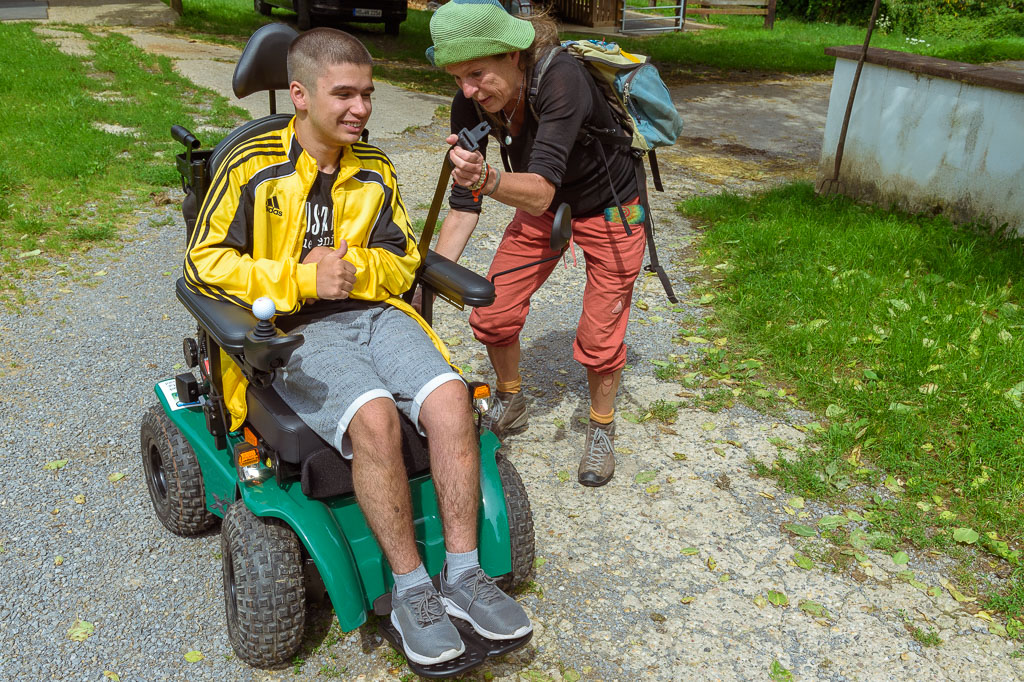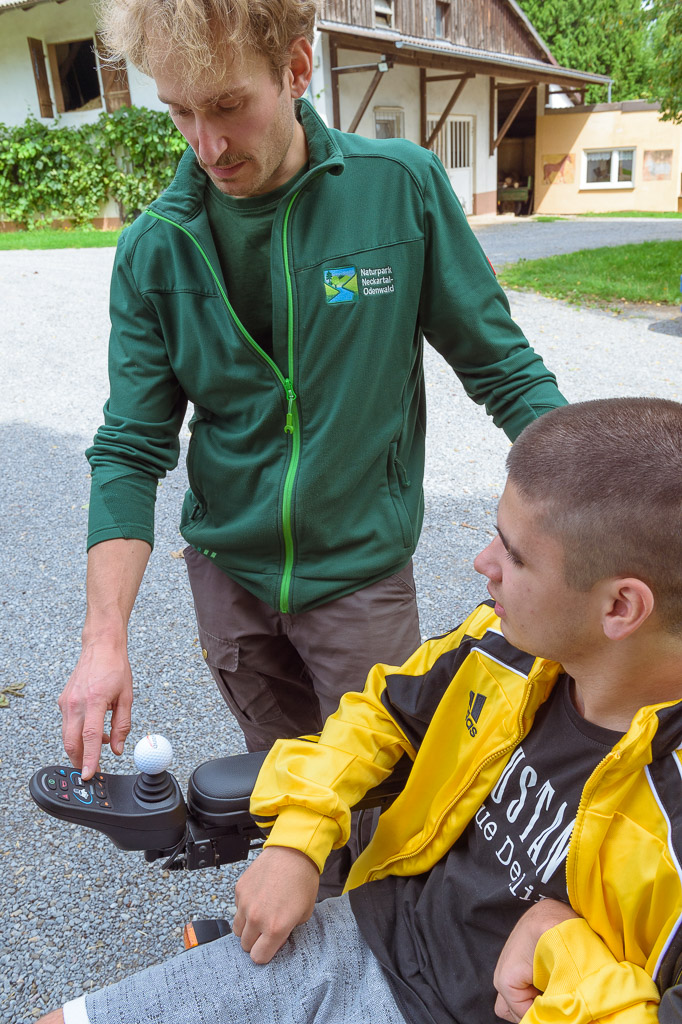For wheelchair users, hiking trips usually end at the point where they begin for others—when the route leaves the asphalt road and turns off into the forest on bumpy trails. Fortunately, in the Neckartal-Odenwald Nature Park this point does not have to be the end, because the electric cross-country wheelchair that the nature reserve office rents out opens up new optionsfor exploring the great outdoors.
The paint gleams with immaculate green. It makes the electronic wheelchair look like a small tractor—an absolutely clean little tractor. There are no scratches and no mud and the wide tread of the four wheels is as clean as if someone had scrubbed it with a toothbrush. In a few hours this will look very different. The wheelchair with the promising name Extreme X8 is taking its maiden voyage today. It came to the Neckartal-Odenwald Nature Park office only a few days ago. What’s special about it is that it is an all-terrain vehicle and is supposed to roll effortlessly across country—over meadows, gravel and wet leaves. Raffael Lutz, who is responsible for accessibility in the reserve, has so far only tested the vehicle at the office in Eberbach. He went up and down a few steps there. “That was no problem,” says the slender man with a moustache. But will the vehicle also prove itself reliable off-road? Samir Sheik wants to find out. He can test the wheelchair today.

The young man approaches the electric wheelchair with shaky steps in a field path in Dilsbergerhof. Idyllically nestled between rolling hills, there is a hamlet, which belongs to Neckargemünd. This terrain shouldn’t be too big a challenge for the wheelchair. “The vehicle crosses the Alps in the promotional video,” says Lutz. According to the manufacturer, it is suitable for trips through the forest as well as on snow and across beaches. This is possible because of the wide low-pressure tyres. They absorb shocks and prevent the wheelchair from sliding too much. Each wheel is driven by its own engine and can move independently of the others. “It’s very unlikely that you get stuck,” Lutz explains. He has been working at the nature park since 2020 after studying geography in Heidelberg. The cost for the wheelchair was about 30,000 euros, provided by the park with funding from the Waldstrategie (forest strategy) programme, which was set up by the state of Baden-Württemberg. The funds for two more electric wheelchairs have already been approved. The nature park wants to lend out this small fleet soon. It is a pilot project that Lutz hopes will find others who want to copy it.

But today he is curious to see how the vehicle performs off-road and whether Samir feels comfortable in it. The young man with the short-shaven hair has already taken a liking to the horn. He keeps pressing the little button with the trumpet, as if to say: “Can we finally get going?” Samir had a bicycle accident and suffered a traumatic brain injury at the age of 11. Since then he has been paralysed on the left side. Then he came from Ukraine to Germany, attended the SRH Stephen-Hawking-Schule independent school that is located right behind the hill in Neckargemünd and graduated from it a while ago. His former class teacher Claudia Hanko joins today’s trip. She is the person who initiated the Camino Incluso together with her students (click here for our story about it). She immediately notices the two hooks on the back of the vehicle where Samir can hang his backpack. Many electric wheelchairs don’t have these, she says. “It’s quite exhausting otherwise for the accompanying person to carry the backpack the entire trip.”


















